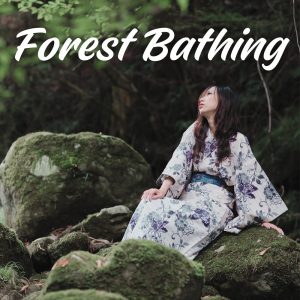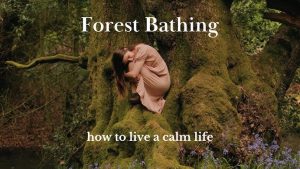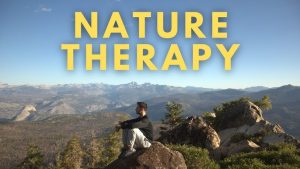Introduction
In today’s fast-paced, tech-driven world, many people are turning to nature to find peace and improve their health. One popular trend is forest bathing, along with eco-therapy. These practices use the calming power of nature to boost both mental and physical well-being. Research shows that spending time in natural environments can reduce stress, spark creativity, and improve overall health. As more people discover the benefits of nature-based healing, it’s becoming a go-to choice for many seeking better well-being.
This article explores how forest bathing and eco-therapy work, the benefits they offer, and tips for bringing nature into your life. Whether you’re new to these ideas or looking to deepen your connection with nature, read on to learn how healing with nature can positively impact your life in a holistic way.
What Is Forest Bathing?

Forest bathing, or shinrin-yoku, started in Japan as a way to connect with nature by spending time in a forest. It’s more than just a walk in the woods; it’s a mindful activity that uses all your senses to truly experience the environment. The goal is to slow down, breathe deeply, and let nature help reduce stress and bring peace.
During a forest bathing session, people focus on the sounds of birds, the rustling leaves, the smell of pine or flowers, and the changes in light and temperature. This helps the body relax, lowering stress hormones and clearing the mind. Studies show that being in nature can boost the immune system, improve mood, and even lower blood pressure, making forest bathing a great way to improve health overall.
What Is Eco-Therapy?

Eco-therapy is a broader approach to mental health that uses nature-based activities to promote well-being. It includes activities like gardening, wilderness therapy, and nature meditation, going beyond forest bathing. The idea behind eco-therapy is that humans are naturally connected to the environment, and reconnecting with nature can greatly improve mental and emotional health.
In eco-therapy, therapists guide people to reconnect with nature through structured activities that promote mindfulness and a sense of belonging. This therapy is especially helpful for people dealing with anxiety, depression, and stress. Spending time in nature helps people feel renewed and healed in ways that may be harder to find in busy, urban environments.
Practical Tips for Incorporating Forest Bathing into Your Life

If you’d like to try forest bathing, here are some simple tips to get started:
- Find a Natural Spot: Set aside time to visit a local park, forest, or garden. Even short visits of 15 to 30 minutes can make a big difference in reducing stress and boosting well-being. As you walk or sit, focus on the sounds, smells, and sights around you. This mindfulness helps you stay present and deepen your connection to nature.
- Leave Your Phone Behind: To avoid distractions, try leaving your phone off during your sessions. You can bring a journal to write down your thoughts, or simply let your mind relax and wander as you enjoy the surroundings.
- Create a Nature Space at Home: If you don’t have easy access to a forest or large park, you can create a small nature retreat at home. Add plants, water features, or natural materials to your backyard or even balcony. This can help bring the peacefulness of nature into your daily life.
Practical Tips for Embracing Eco-Therapy

Eco-therapy is a flexible practice that can fit into your life in different ways. Here are some simple ways to get started:
- Gardening: Gardening is a great way to connect with the earth, care for plants, and enjoy the rewards of your work. Whether you have a large garden or just a few indoor plants, taking care of them can be very calming and therapeutic.
- Outdoor Meditation or Yoga: Find a peaceful spot in nature and practice meditation or yoga. You can use guided apps or routines to help focus your mind and body. This not only helps reduce stress but also improves flexibility and physical health.
- Community Environmental Projects: Get involved in local activities like tree planting, park clean-ups, or conservation efforts. These projects help both the environment and your well-being. Working on eco-friendly projects in your community can also give you a sense of purpose and connection to others.
Integrating Forest Bathing and Eco-Therapy into Daily Routines

Integrating forest bathing and eco-therapy into your daily life can be simple yet transformative. Here’s how you can do it:
- Commit to Spending Time in Nature: Start by making time for nature every day, even if it’s just a small change to your routine. This could be a morning walk in a local park, a break to sit under a tree, or a weekend hike in a nearby forest.
- Schedule “Nature Breaks”: For those with busy schedules, try taking regular nature breaks during the day. These short pauses, even for just a few minutes, can help clear your mind and reduce stress. Adding these breaks can make a big difference in how you feel.
- Combine with Other Wellness Routines: Pairing nature-based activities with your current wellness practices, like meditation, exercise, or journaling, can enhance their benefits and help you feel more grounded and relaxed.
- Create a Nature-Inspired Space at Home: Set up a small indoor garden or a peaceful corner with plants and natural light. This creates a daily reminder of the calming benefits of nature and can help bring the healing power of the outdoors into your home.
The Future of Healing with Nature

As the world becomes more urbanized and technology-driven, the need to reconnect with nature is growing stronger. The practices of forest bathing and eco-therapy are likely to become even more integrated into mainstream wellness strategies. With increasing evidence supporting the health benefits of natural environments, more individuals, healthcare providers, and even corporations are expected to adopt nature-based therapies as part of their holistic approach to well-being.
Innovations in technology may also enhance these experiences. For example, virtual reality could simulate natural environments for those who cannot access green spaces easily, while wearable devices may monitor physiological responses to time spent in nature, providing personalized feedback on the benefits of forest bathing. As research continues and public awareness grows, the integration of natural healing practices into daily life promises a healthier, more balanced future for all.
Comparative Table: Traditional Therapy vs. Eco-Therapy and Forest Bathing
| Aspect | Traditional Therapy | Eco-Therapy & Forest Bathing |
|---|---|---|
| Environment | Typically indoors, clinical settings | Natural settings, outdoors, green spaces |
| Approach | Verbal and cognitive-based, structured sessions | Sensory engagement, mindfulness, connection with nature |
| Stress Reduction | Focus on discussion and reflection | Natural stimuli lower cortisol and promote relaxation |
| Physical Health | Limited physical activity | Encourages movement, improves cardiovascular health |
| Immune Function | Indirect impact through stress management | Direct improvement through exposure to phytoncides |
| Overall Well-Being | Focus on mental health through therapy | Holistic improvement in physical, mental, and emotional health |
Conclusion
In summary, the science behind forest bathing and eco-therapy underscores the profound benefits of healing with nature. These practices reduce stress, enhance immune function, improve mood, and promote overall well-being. By integrating nature-based therapies into your daily routine, you can achieve a deeper connection with the environment and experience tangible improvements in your physical and mental health. Embrace the power of nature and discover a holistic path to wellness that harmonizes mind, body, and spirit.










